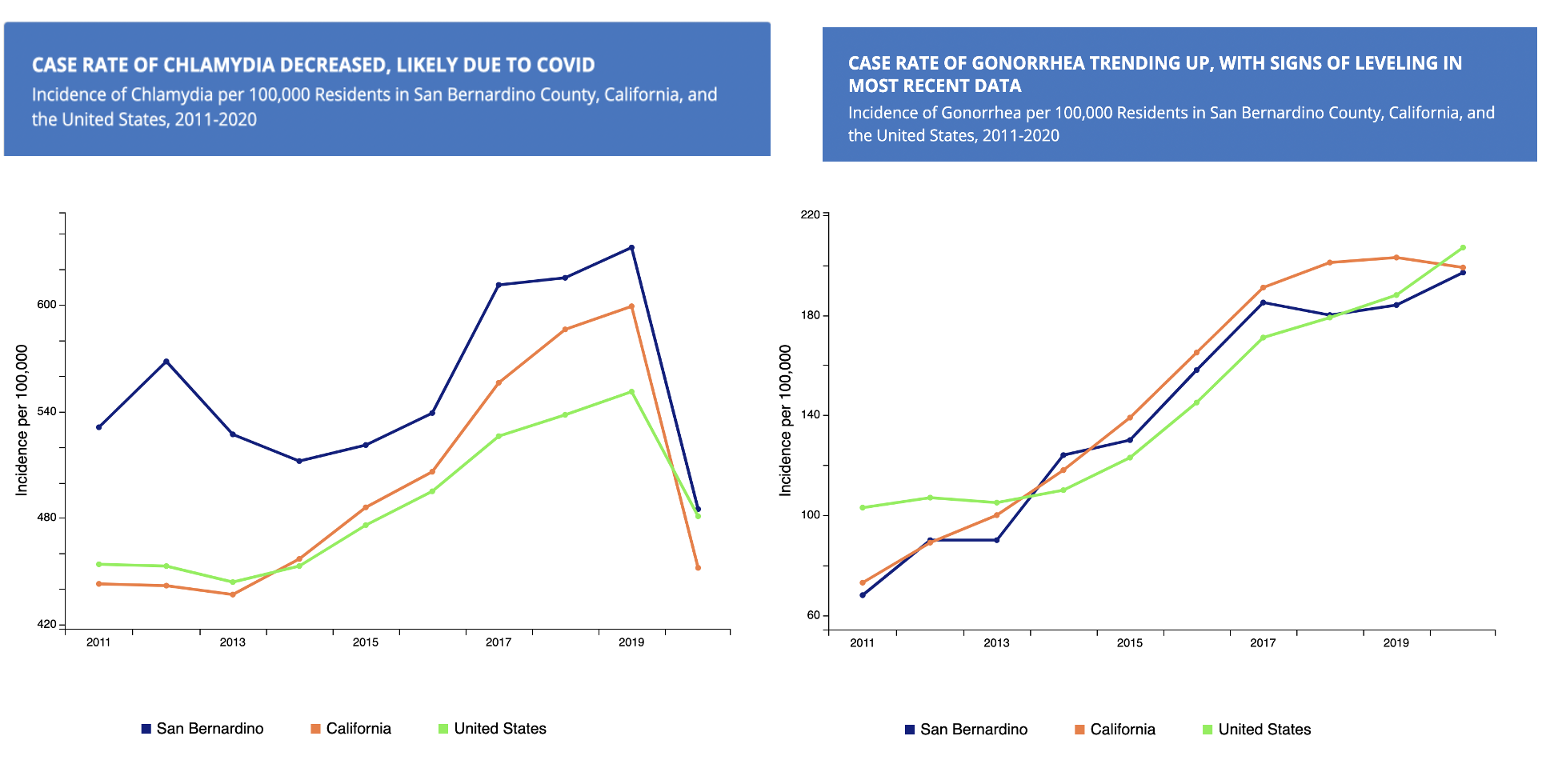Source: Centers for Disease Control and Prevention (cdc.gov/std/)
As life gets busier, it’s easy to overlook or not even consider getting tested for sexually transmitted infections (STIs). Yet, according to the Centers for Disease Control and Prevention (CDC), residents in San Bernardino County, including those around Cal State San Bernardino, have higher average rates of STIs than other parts of the state or the nation. Since many STIs show no symptoms for a prolonged period, they can be unknowingly transmitted to partners. The encouraging news is that most STIs are treatable. Therefore, it’s crucial to practice safer sex, undergo regular STI testing, and seek treatment if diagnosed positive.
With April marking STI Awareness Month, I’m here to address some of the most commonly asked questions about STIs.
How are STIs spread? Sexually transmitted infections, also referred to as sexually transmitted diseases (STDs), are viral or bacterial infections transmitted from one person to another during sexual contact. This typically occurs during vaginal, anal, and oral sex, or when sharing sex toys. Close contact between mouths or genitals without using protection can lead to contracting or spreading an STI.
What are the most common STIs? Here are some of the most prevalent STIs I encounter and treat regularly:
- Chlamydia: A common bacterial infection treatable with antibiotics, transmitted through sexual contact.
- Gonorrhea: Another common bacterial infection, similarly spread through sexual contact.
- Herpes: A highly prevalent virus causing outbreaks of painful blisters or sores on the genitals and/or mouth.
- HPV (Human Papillomavirus): The most common sexually transmitted infection, with many individuals contracting it at some point in their lives. Some strains can cause genital warts or various cancers, emphasizing the importance of testing and monitoring.
- HIV (Human Immunodeficiency Virus): The virus leading to AIDS, which weakens the immune system, making individuals more susceptible to severe infections. It’s spread through sexual contact and bodily fluids.
- Syphilis: A common infection transmitted through vaginal, anal, and oral sex, with pregnant individuals possibly passing it to their children, leading to congenital syphilis.
How do I prevent STIs? The simplest method to prevent STIs is by consistently using condoms or dental dams during sexual activity. However, correct usage is essential. Additionally, individuals at higher risk of contracting HIV may consider PrEP, a daily medication for HIV prevention. In situations where there’s potential STI exposure, doxy PEP, a post-exposure antibiotic, can reduce the risk. Regular testing remains crucial for maintaining sexual health and protecting both oneself and partners.
How and when do I get tested for STIs? Testing is vital after unprotected sexual contact, learning of a partner’s positive STI status, or experiencing potential STI symptoms. Symptoms may include discharge, sores or bumps, burning sensation during urination, itching or swelling in genital or anal areas, or flu-like symptoms. Scheduling an appointment with the campus health center, medical provider, or local Planned Parenthood health center is the initial step. During the appointment, the provider will determine the necessary tests, which typically involve blood tests, urine tests, or genital swabs.
In conclusion, STIs are common and treatable infections. Contracting an STI doesn’t define a person; it merely indicates an infection was acquired. As a family practice physician at Planned Parenthood of Orange and San Bernardino Counties, I encourage everyone to prioritize sexual health and seek testing and treatment when necessary.

